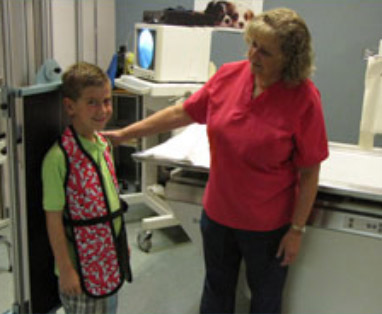Why Choose Us?
At Edgebrook Radiology we offer:
- Walk-in availability for x-ray.
- On-site interpretation of your images and prompt communication of results to your medical provider.
- Complimentary copies of your images on f CD on request by your doctor.
- State-of-the-art digital x-ray which is safer and faster than conventional x-ray. It provides enhanced image quality, uses less radiation, and requires fewer repeat exposures.
What is an x-ray?
Radiography is the oldest and most frequently used form of medical imaging. X-rays can produce diagnostic images of the human body on film or digitally. Depending on technical adjustments, a radiograph can be optimized for demonstration of different types of tissue, like bones, the lungs, abdominal organs or other soft tissues.
What are some common uses of x-ray?
- Identify bone fractures and follow up healing.
- Assess for arthritis or other causes of painful joints.
- Evaluate the heart and lungs for difficulty breathing, from pneumonia, heart failure, or other lung disease.
- Look for kidney stones.
- Explore causes for abdominal pain, like bowel obstruction or constipation
How should I prepare for an x-ray?

No special preparation is required for most bone x-rays. You may be asked to change into a gown before your examination and remove jewelry, eyeglasses, and any metal objects during the exam.
Be prepared to point out to the technologist the location of your pain or symptoms. She may wish to apply a skin marker to the area of interest or will convey that information to the radiologist. Also be sure to mention if you have had any injury, surgery or known regional abnormality.
*Women should always inform the technologist if there is any possibility that they are pregnant.
What should I expect during this exam?
A x-ray exam usually takes five minutes to half an hour.
- The technologist positions you on the exam table and places a film holder under the table in the area of the body to be imaged.
- Pillows may be used to help you hold the proper position.
- Then the technologist steps behind a radiation barrier and asks you to hold very still, without breathing for a few seconds.
- The x-ray equipment is activated, sending a beam of x-rays through the body to expose the film.
- The technologist then repositions you for another view, and the process is repeated as necessary.
- Sometimes the same views are repeated using different technical settings to optimize the quality of the image or adjust it for better demonstration of certain tissue types.
- When your x-rays are completed you will be asked to wait until the technologist checks the images. Occasionally, additional views are needed for a more detailed look at a questionable abnormality.
What will I experience during an x-ray?
- X-ray imaging is painless.
- Sometimes, to get a clear image of an injury such as a possible fracture, you may be asked to hold an uncomfortable position for a short time. Any movement could blur the image and make it necessary to repeat the procedure.
